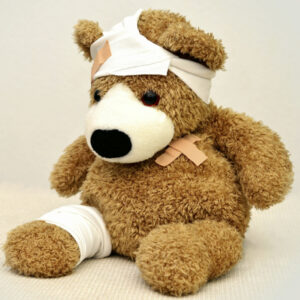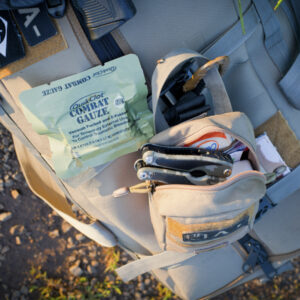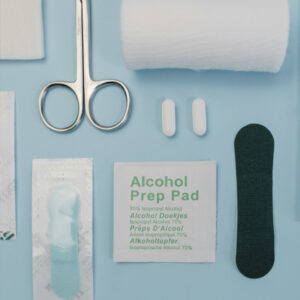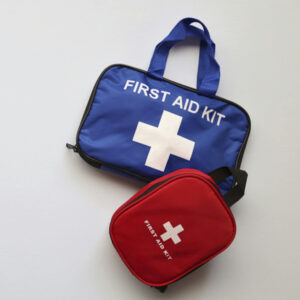Bandaged and Ready: A Guide to Different Types of First Aid Kits and Why They’re Essential

Life is full of bumps and bruises, from minor cuts and scrapes to more serious emergencies. That’s why having a first aid kit readily available is crucial. But with so many different types and sizes out there, choosing the right one can be overwhelming. Worry not, intrepid adventurers and everyday heroes! This blog is your guide to navigating the wonderful world of first aid kits.
First things first:
- What is a first aid kit? It’s a portable collection of supplies used to treat minor injuries and illnesses until professional medical help arrives.
- Why is it important? Being prepared for the unexpected can make a big difference in the outcome of an injury or illness. Having the right supplies on hand can stop bleeding, ease pain, and prevent infections.
Now, let’s explore the different types of first aid kits:
Basic First Aid Kit:
This is your everyday hero, perfect for home, office, or car. It should contain essential items like:
- Adhesive bandages in various sizes
- Sterile gauze pads
- Antiseptic wipes or solution
- Adhesive bandages and sterile gauze pads
- Ointment for minor burns and scrapes
- Thermometer
- Tweezers
- Scissors
- Instant cold compress
- Pain relievers (consult your doctor first)
Adventure First Aid Kit:

For the explorers and outdoor enthusiasts, this kit should be stocked with the basics plus additional items for wilderness injuries such as:
- Triangular bandage for slings or splints
- Wound closure strips
- Emergency blanket
- CPR face shield
- Compass and whistle
- Insect repellent and sunscreen
Sports First Aid Kit:
Athletes and active individuals need a kit geared towards sports-related injuries. This kit should include the basics plus:
- Athletic tape
- Ice pack
- Anti-inflammatory medication (consult your doctor first)
- Eye wash solution
Family First Aid Kit:
Families with children should consider a kit with kid-friendly features:
- Colorful bandages and wound closures
- Fever reducer and pain reliever for children (consult your doctor first)
- Finger puppets or small toys for distraction
Vehicle First Aid Kit:
As well as your basics, you should keep a kit in your car for on-the-road emergencies:
- High-visibility vest and emergency flares
- Jumper cables
- First aid manual
Remember:
- Choose a kit that’s right for your needs and lifestyle.
- Inspect your kit regularly and replace expired items.
- Learn basic first aid skills, like CPR and wound care.
- Don’t hesitate to seek professional medical help for serious injuries.
Bonus Tip:
Personalize your kit! Add items specific to your needs, like allergy medication or medications you take regularly. The kit should include items based on your first aid knowledge and the situations you may find yourself in. If you are an avid hunter your kit will be different (possibly including a trauma kit) than a simple boo-boo kit of adhesive bandages, ointment and pain killer.
Having a first aid kit is like having a tiny superhero on your side, ready to spring into action whenever needed. So, be prepared, stay safe, and explore the world with confidence!
I hope this blog has helped you navigate the world of first aid kits. Remember, even a small kit can make a big difference in an emergency. So, stay bandaged and ready, and happy exploring!

